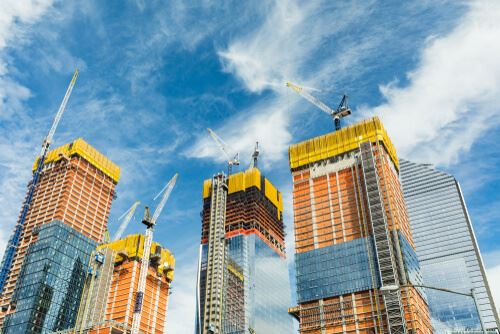
In early July, the New York City Department of Buildings released an interactive map that shows the locations of construction sites where workers, supervisors, and others involved in large construction projects must receive site training. The map displays over 8,000 different worksites across NYC.
The DOB’s new map is designed to provide greater clarity about additional requirements for sites subject to Local Law 196, which was passed in October 2017 and is still being rolled out with periodic compliance deadlines.
The law mandates safety training for new buildings, major alterations, and other large-scale construction projects, and is part of the City’s efforts to leverage technology as a means for improving construction industry safety.
Site Safety Construction Map: How it Works
By using the new map, construction workers and employers can determine instantly whether they or the sites they work on are subject to safety training requirements. As of early July, there are over 8,000 construction sites in New York City that require safety training under Local Law 196.
As stated in a recent DOB press release, the Active Site Safety Professional Locations map provides both a visual rendering of construction projects across the City, and a searchable list of locations where users can enter the address of their worksites. If it appears on the map, safety training is a must. It’s also updated daily.
In addition to location data, each site on the map has a link with additional information about the projects.
Take a look at the NYC DOB’s new interactive site training map!
About Local Law 196
Local Law 196 was signed into law in October 2017 to create additional safety requirements which protect workers involved in higher risk projects. Here are a few details about the law:
- The law mandates worker safety training on sites where the Department of Buildings requires concrete safety managers, site-safety managers or coordinators, and construction superintendents;
- Currently, demo and construction workers on sites subject to Local Law 196 must have at least 10 hours of safety training, and at least 30 hours of training (by December 1, 2019).
- When Local Law 196 is fully phased in on September 1, 2020, workers will be required to have completed at least 40 hours of training.
A Commitment to Construction Worker Safety
NYC’s building boom has seen record-numbers of mega projects and construction spending, as well as massive residential buildings, renovations, and an approval for the largest building demo in history. Unfortunately, that growth has had its downfalls – 2018 was the most dangerous year for construction accidents in NYC in almost a decade.
As a firm with a history of fighting for injured construction workers and their families, our team at The Perecman Firm, P.L.L.C., is happy to see New York City officials revitalizing their commitment to safety, which begins with ensuring employers abide by regulations requiring rigorous safety training.
The use of new technology is also reassuring, and will help expand transparency about construction site safety and the laws (especially new ones). In addition to the interactive site safety training map, the DOB is also rolling out other interactive maps, dashboards, and reports providing workers and others in the industry with more accurate, timely, and historical data.
While safety improvements are much needed and always welcomed, they unfortunately do not eliminate all risks. At The Perecman Firm, P.L.L.C., our nationally recognized trial lawyers are available to help injured workers and families across NYC and beyond protect their rights to compensation following construction accidents and work-related injuries. Contact us to speak with a lawyer.



